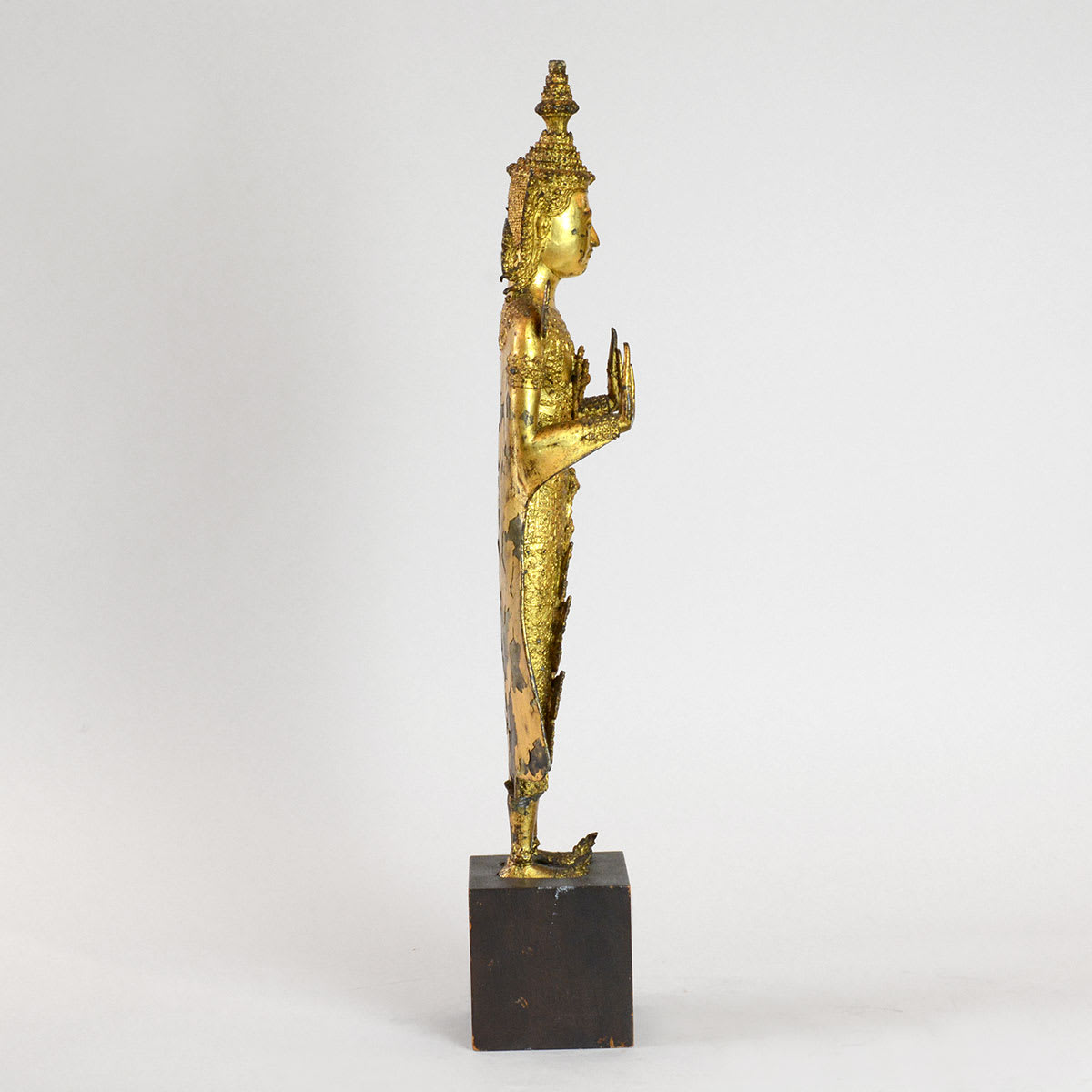Thai (Rattanakosin) Gilt Bronze Standing Buddha, 19th Century CE
Gilt Bronze
62.2 x 16.5 cm
24 1/2 x 6 1/2 in
24 1/2 x 6 1/2 in
PH.0130
Further images
This gorgeous gilt bronze Buddha is represented standing, or perhaps “walking,” holding both his hands in the double Abhaya mudra, which symbolizes protection, benevolence, and peace. A stylized flame of...
This gorgeous gilt bronze Buddha is represented standing, or perhaps “walking,” holding both his hands in the double Abhaya mudra, which symbolizes protection, benevolence, and peace. A stylized flame of enlightenment rises from the top of his ushnisa, a bump symbolic of the Buddha’s infinite wisdom that here resembles a stupa found in traditional Buddhist architecture. The Buddha wears a robe decorated in floral motifs, a type specific to the Rattanakosin era, from the reign of Rama III onward (1824 A.D.) Overall, this exquisite sculpture beautifully memorializes one of history greatest holy figures.
This type of standing Buddha is commonly referred to as the “walking Buddha.” Apparently, this posture appears to illustrate certain texts that were recorded during the Sukhothai period. Specifically, this form seems to relate to the Buddha as described in canons written during the reign of Ramkhamheng in the late 13th Century. In the city of Sukhothai, representations of the walking Buddha were found placed against the walls of temples. At least one hand is traditionally held in the Abhaya mudra, while the other arm may hang beside the body. Sometimes, one leg is portrayed advancing forwards of the other, contributing to the designation of these figures as walking.
This type of standing Buddha is commonly referred to as the “walking Buddha.” Apparently, this posture appears to illustrate certain texts that were recorded during the Sukhothai period. Specifically, this form seems to relate to the Buddha as described in canons written during the reign of Ramkhamheng in the late 13th Century. In the city of Sukhothai, representations of the walking Buddha were found placed against the walls of temples. At least one hand is traditionally held in the Abhaya mudra, while the other arm may hang beside the body. Sometimes, one leg is portrayed advancing forwards of the other, contributing to the designation of these figures as walking.









